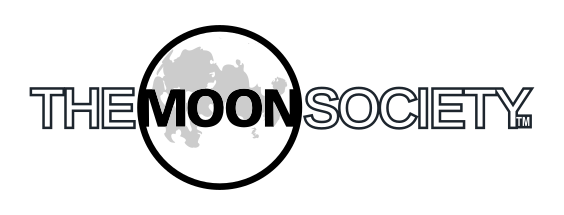Moon Track at ISDC 2012 Washington DC – “Unmitigated Success!”
Sunday, May 28, 2012 was The Moon Society’s time to shine. Our track was scheduled against the Student Track (presentations from the ISSDC), the Transhumanism & Space Exploration track, the Living in Space track organized by the Kepler Space Institute, and General Presentations in the big room. And the lunch went long. Nevertheless, your Moon Society president started promptly at 2pm to a full house. His presentation on an overview of cislunar space was well-received, and set the stage for the following presentations. John Cserep then gave an overview of an Earth-Moon L1 facility that could be used to control telerobotic mining operations on the Moon, in addition to serving other customers.
This led nicely into Jim Keravala’s talk on Shackleton Energy’s plans to mine at the Lunar poles to provide propellant to cislunar space. Dr. Carl Brandon from VT Tech then described their project to land a CubeSat on the Moon. (continued next page)
We then had our first student presentation. As background, the National Space Society and NASA Ames run an annual International Space Settlement Design Competition that draws entries from around the world. When the track chairs were putting together their tracks, they received a request from Lynne Zielinski of NSS leadership to make some time available in our tracks for the students to give presentations. It’s excellent experience for them, and so The Moon Society immediately agreed to 3 presentations (30 minutes) to incorporate into our four hour track, with the proviso that they all had to be located in cislunar space.
Our first was from Tanmay Band, who presented for Team Aris from India. Their proposal is for an L5 facility with a scalable structure, allowing for the eventual housing of hundreds of thousands of individuals. Paul Graham then described OpenLuna’s work on communications and surface transport hardware. The Moon Society has long had a good relationship with OpenLuna as our efforts are very complementary, and Paul allowed us to share space on his display table in the exhibit hall. He’s got a great exhibit, but the genuine fake Moon rocks that were on display from TMS helped draw people to the table to be engaged in Moon talk. We also showed off some nice selenospheres, including the new Sky & Telescope Moon globe that uses LRO imagery for the most up-to-date globe around.
The second student presentation was from Team Plenidus, also from India. Ashish Chadda, Rajat Kalia, and Deigant Yadava had scripted their presentation to an movie, essentially a moving ppt, and so were able to keep right to ten minutes. I can say they had some nice villas in their design. Next up was John Strickland, from NSS Austin and a long term leader in NSS, who gave an overview of transportation considerations for cislunar space. One of the key takeaways is that with depots in LEO, at EML1, and on the Moon, you don’t need more than 4 km/s of delta-V to either get to the next gas station, or go to/from any destination of interest in cislunar space. This is a helpful thumbnail for designing transportation systems.
The last student presentation was from Team Concordia from Romania. The most notable part of their presentation was their proposal for retrieving asteroid materials, wherein they would use what I dubbed a Space Squid. A module latches onto an asteroidal body and then deploys long arms that wrap around the asteroid. Each arm is laden with thrusters, which are then used to direct the asteroid to where they want it. I suggested they go talk to the Planetary Resources folks.
Our last speaker for the day was Dr. David Smith from the GRAIL mission, who gave an overview of the mission, and shared some of the early results they’re seeing. One notable result is that it looks like the data might be able to unveil lavatubes, especially in conjunction with some of the data from LRO. This was the perfect lead-in to our topic for The Moon Society’s theme for their track at next year’s ISDC: Lunar Lava Tubes.
Attendance was good throughout the day, even with very compelling presentations in other tracks. We were able to hold very closely to the schedule, and our content nicely interwove to make a compelling case that cislunar development is important, and entirely doable given where we are technologically.
As a Thank You to each of the speakers, TMS leadership suggested a lapel pin and one-year membership in TMS for each of the speakers, so we just got a small boost in membership. Hopefully we’ve also helped to establish some more credibility for our organization as a Moon advocacy entity. Special kudos go out to our at-large Ambassador of Goodwill, Dave Dunlop, who is already busy networking for our track at next year’s ISDC, at which the Moon Track will focus on Lunar Lava Tubes.
KM
